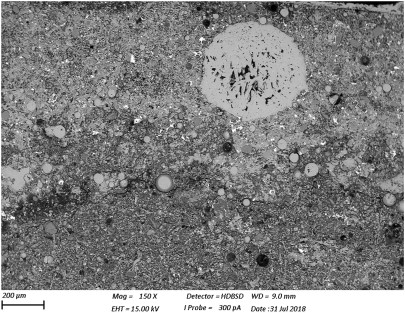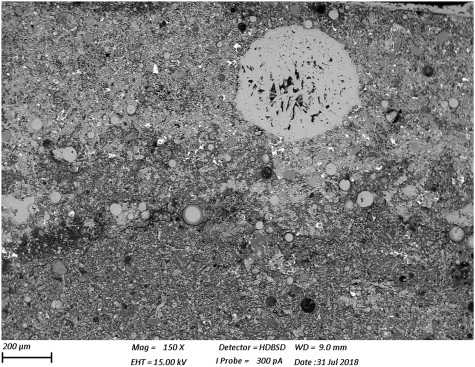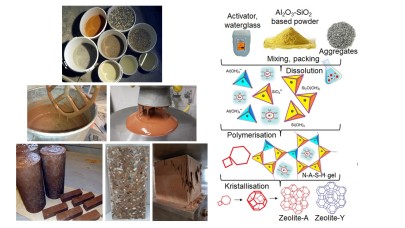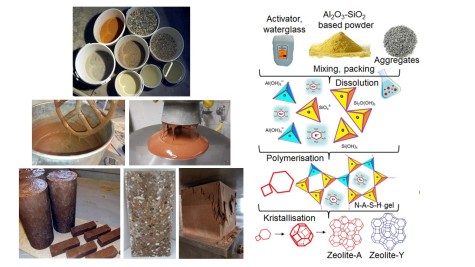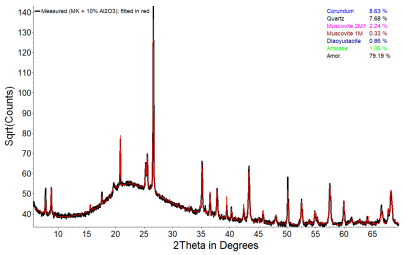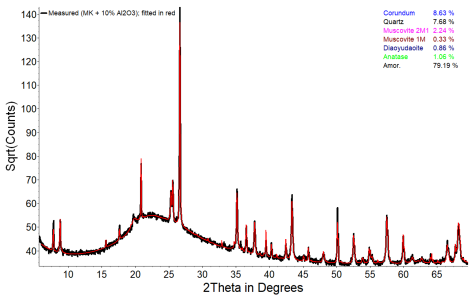Contents
Chemical processes are of fundamental importance in the manufacture and processing of building materials. For example, all hardening processes are controlled by chemical reactions. Building protection agents and coatings require complex, often organochemical compounds. Also during their service life, building materials are subjected to chemical stresses and attacks, be it by salt input, leaching or corrosion by different chemical agents.
The lecture and practical exercises aim to combine theory and practice. The chemical properties of the materials are demonstrated and corresponding reactions and changes due to externally attacking or acting influences are shown, analyzed and explained in great detail.
Means and methods to protect surfaces or to improve rheological properties are discussed.
The whole course conveys different material parameters from raw materials, secondary raw materials to highly synthesised materials. Coupled with the different laboratory environments at the WiB students will learn to choose different analytical methods to obtain valuable data and critically examine said data.
This course demonstrates the basics of chemistry through Building Chemistry applications. Students will gain a unique background in Instrumental Analytics, including XRD, TG, wet chemistry, microscopic, and spectroscopic characterizations of building materials. The course includes theoretical, laboratory, and practical training assignments with consultation feedback.
Key topics:
- Minerals and Rocks as natural resources
- Instrumental Analytics
- Cement chemistry
- Chemistry of supplementary cementitious materials
- Materials Damaging mechanisms
- Admixtures
- Polymers
- Surface coatings
This course emphasizes the production technology and materials science approach by linking material composition and microstructure differences to resulting properties. Students will also learn to model multi-component reaction systems using interactive software, enabling the use of effective chemical predictive tools for design of modern sustainable building materials.
Objective
The objective of this course is to train MSc students with no or little chemistry background to tackle sustainability challenges in the construction industry and understand chemical perspectives. Upon completion, students will use chemical principles, instrumental characterization techniques, and computational methods in their own research and industry careers. Understanding the chemical reactions in raw materials selection, production, and use of building materials is crucial for engineers and builders to design and optimize material properties for workability, strength, durability, sustainability, and other characteristics.
Lecture
| Professor | Prof. Dr.ir. Eddie Koenders |
| Supervision by: |
Dr. Chem. Ing. Neven Ukrainczyk M.Sc. Chem. Eng. Agustin Laveglia M.Sc. Peng Xiao |
| Rotation | Summer Semester |
| Requirements | Bachelor course “Construction and Building Materials” |
| Credit Points | 6 CP |
Literature recommendations
| Recommended primer literature: |
| Torraca G., Lectures on Materials Science for Architectural Conservation, The Getty Conservation Institute, Los Angeles (2009) |
| Scrivener K., Snellings R., Lothenbach B., A Practical Guide to Microstructural Analysis of Cementitious Materials, CRC Press 2016, ebook 2017: https://doi.org/10.1201/b19074 |
| Further literature: |
| Hansen P.F., Jensen O.M.,The Science of Construction Materials, Springer 2009, https://doi.org/10.1007/978-3-540-70898-8 |
| Aïtcin P.-C. and Flatt R.J., Science and Technology of Concrete Admixtures, Elsevier 2016: https://doi.org/10.1016/C2015-0-00150-2 |
| Benedix R, Bauchemie: Einführung in die Chemie für Bauingenieure und Architekten, 7 Aufl. 2020, Springer |
| Pierre-Claude Aïtcin, Binders for Durable and Sustainable Concrete, Taylor&Francis Group 2008; eBook 2014: https://doi.org/10.1201/9781482265767 |
| Bahurudeen A, P.V.P. Moorthi, Testing of Construction Materials, 2020 CRC Press, https://doi.org/10.1201/9781003124825 |
| Lea's Chemistry of Cement and Concrete, Fifth Edition (2017): https://doi.org/10.1016/C2013-0-19325-7 |
| Gaffney J.F. and Marley N.A., General Chemistry for Engineers, Elsevier 2018: https://doi.org/10.1016/C2015-0-05956-1 |


